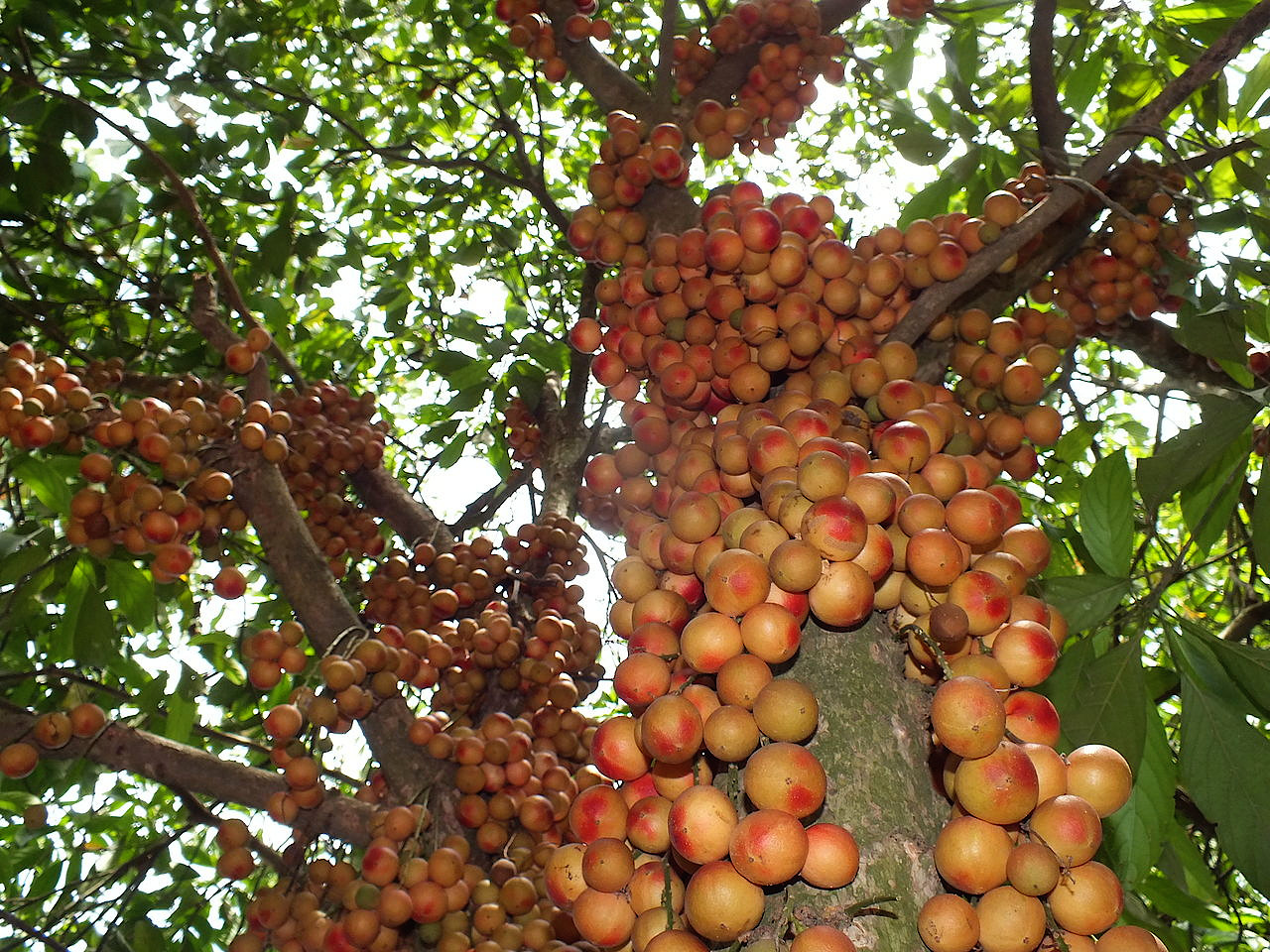Baccaurea motleyana Müll.Arg. - Euphorbiaceae - rambai, rambi, Rambai
Evergreen tree, 6-10 m tall; leaf blade elliptic or elliptic-lanceolate, 20-35 × 7.5-17cm, papery; racemelike panicles axillary or cauliflorous; male and female flowers gray papillose-puberulent; fruits capsules, ovoid or globose, 2.5-3 cm in diameter, with one seed… „The fruits are edible; the aril is sweet to acid and eaten raw, cooked, or preserved. The bark is rich in tannins and is used in dyeing.“ efloras.org
„Fruit tree which grows wild in parts of Southeast Asia and is cultivated for its fruit in Thailand and Peninsular Malaysia… The species is dioecious, with male and female flowers growing on separate individuals. Both types of flowers are fragrant and have yellow sepals. The staminate racemes are up to 15 centimeters long and the pistillate inflorescences may reach 75 centimeters in length. The fruits are each 2 to 5 centimeters long and about two wide and grow in strands.“ wikipedia
„The rambai is native and commonly cultivated in the lowlands of Malaya, grows wild in Bangha and Borneo and is occasionally cultivated in Java. It is valued for its shade as well as its fruits, which are eaten raw, stewed or made into jam or wine.“ http://www.hort.purdue.edu/newcrop/morton/rambai_ars.html
„(E)-Hex-2-enal was the major component of rambai fruit volatiles which also contained high levels of methyl 2-hydroxy-3-methylbutanoate, methyl 2-hydroxy-3-methylpentanoate and methyl 2-hydroxy-4-methylpentanoate.“
[Volatile constituents of the fruits of Lansium domesticum correa (Duku and Langsat) and Baccaurea motleyana (Muell. Arg.) Muell. Arg.(Rambai). Wong, K. C., Wong, S. W., Siew, S. S., Tie, D. Y., Flavour and fragrance journal, Vol.9(6), 1994, 319-324]

Baccaurea motleyana fruits, Vietnam (2013); author: 松岡明芳 wikimedia commons CC-BY-SA 3.0